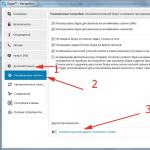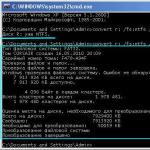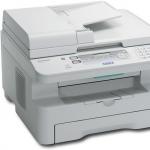Let's say right away that the use of a modern computer without high-speed Internet access today makes no sense. For a long time already the computer ceased to be an independent autonomous device and began to act as a terminal for the World Wide Web. It is logical that tablets also require mobile Internet access. One of the ways to solve this problem is to use 3G modems.
Experienced users remember with a smile the distant times when computer technology was called "computing". It is hard to believe that the devices that replaced the TV, the stereo system and the bookshelf for modern people, as well as presented many hitherto unseen possibilities, were originally intended only for recalculating data arrays and other useful, but at the same time boring tasks.
The real revolution took place in the 90s of the last century, when, thanks to progress, computers became not only compact, but also relatively inexpensive. It is thanks to the progress that electronic computers have turned into multimedia platforms - the playback of audio, video and computer-animated content, as well as their combination.
At the beginning of this century, mass computerization also affected our country. Many people remember that in the early to mid-2000s, a “disco” - disk storage - was a mandatory attribute of a personal computer. For "advanced" users, racks of disks with films, music and games made up a noticeable part of the interior. The problem of cluttering the living space was solved by itself with the advent of high-speed Internet access, which made it possible not to store data on external media, but to “download” them as needed, or even play them online.
New tasks were set by the massive use of mobile computers - laptops, smartphones, etc. If you can still connect the cable of the "wired" Internet to the laptop, then the very idea of tablet mobility is "killed" by this method of connection in principle. A smartphone, "strung" on a cable, would look completely stupid.
It would seem that the problem of mobile access was solved with the advent of Wi-Fi technology - two-way signal transmission over short distances, which communicates between an Internet cable and one or more devices. makes it possible to move with the tablet around the apartment or office without losing connection with the Internet.
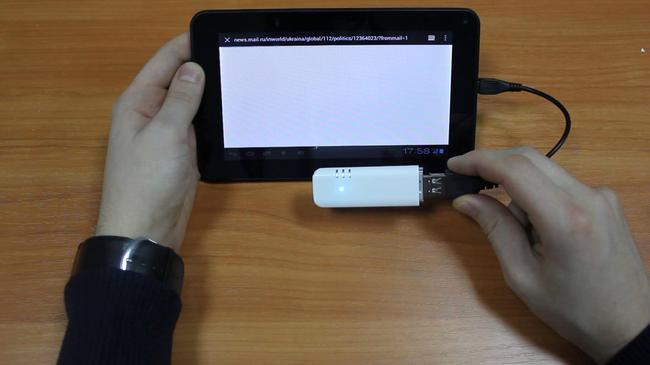
However, in the life of every tablet owner, sooner or later there comes a moment when, due to life circumstances, you need to get off the short leash of Wi-Fi. It doesn't matter if it is connected with a trip on vacation, moving or changing jobs, but one day the tablet user is no longer enough. 3G modems allow you to stay truly mobile.
We connect the 3G modem to the tablet
A modem, a device for connecting a computer to a wired telephone network, seemed to be out of date. Nevertheless, modems have been given a new lease of life thanks to devices that can connect mobile computer gadgets to the Internet using a cellular network. These devices are also called modems. Thus, access to the Web is carried out wherever mobile communications are available.
What does it take to make your mobile computer - an Android tablet - truly mobile?
- At first, the Android tablet itself must be equipped with a USB or micro-USB port. If in doubt, check the markings on the case. USB ports (no matter whether standard or micro) are marked with a distinctive "trident" icon.
- Secondly, if your Android tablet is equipped with a micro USB port, then you will need a special adapter cable between the micro USB port on the tablet and the standard USB that the modems are equipped with. Typically, this cable comes standard on an Android tablet. If you purchased the tablet from your hands or the kit is lost, then we advise you to purchase this cable. When purchasing, be sure to specify that you need a "host" (or OTG) cable. It is such a cable that is required to connect external devices to the tablet. A "client" cable (client) is needed to connect the Android tablet itself as an external device (for example, to a PC) for data exchange or recharging.
- Thirdly, you will need the mobile USB dongle itself. Consider these devices.
Which modem should I choose?
Mainly on the market of mobile modems, 2G and 3G USB modems are presented today. We will not delve into the differences between generations of mobile communications, let's briefly say the most important thing. A 2G modem is cheaper, allows you to use a regular 2G sim card from your phone and is suitable as a means of emergency Internet access. If, for example, the "fixed Internet" is disconnected, you can send an urgent letter or reply to a message in Skype, but only in text mode - you can forget about video communication and streaming video with a 2G modem.
It is the 3G modem that allows you to access the Internet at a sufficient speed, therefore, it is recommended to use this option for a permanent connection of an Android tablet to the Network. If you purchased a 3G modem in a mobile phone store, Megafon or MTS, then, most likely, the device will be "flashed", that is, you cannot change the operator with whom you have entered into a contract. But the modem itself will cost you a little less. You can purchase an "unprocessed" modem and buy a 3G sim-card, Beeline or Megafon separately. What's better? There is no definite answer to this question, you must take into account your needs and conditions of mobile operators in your region.
Step one
If you already have everything that we have listed, and most importantly, ready to go, we proceed to connect. Initially, 3G USB modems were intended for personal computers, therefore, to bring the MTS, Beeline or Megafon modem into working condition, we need a PC.
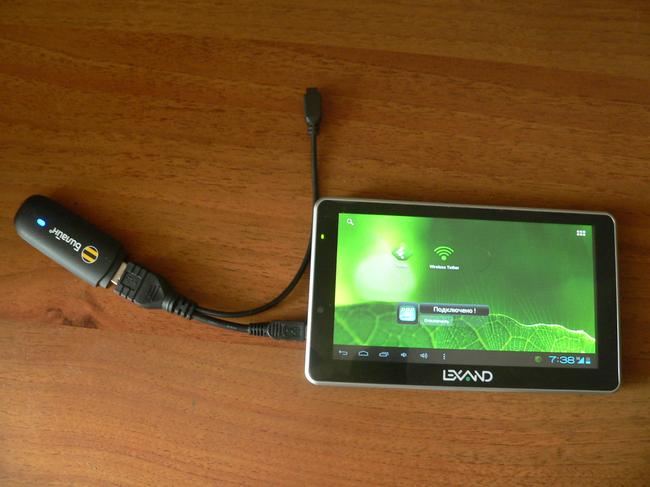
Connect the modem to the PC, install the software bundled with the modem - driver programs and special applications for configuring the modem. The software can be recorded on the supplied CD-ROM or on the drive of the modem itself.
For the modem to work correctly with an Android tablet, you need to switch the 3G modem to "modem only" mode. It is also recommended to disable PIN verification. You can do both using the app included in the software suite. The set of modems "flashed" by mobile operators Megafon, Beeline or MTS, as a rule, comes with Russian-language applications, which greatly facilitates the configuration of a 3G modem.
For your information: if you do not have a PC, you can configure the modem directly using the Android tablet to which the modem is connected. To do this, you need special applications such as 3GSW. However, this application is not included in the list of verified content distributed through the Google Market and you will use it at your own risk.
Step two
In the tablet settings, go to the "Network settings" section (in different tablet models, the menu items and sections may be called differently) and activate the "Data transfer" and 3G items. We connect the modem to the tablet, we are waiting for the moment when the light on the modem case stops blinking.
Next, you need to go to "Additional settings" and create an access point using the item "APN access points". You can clarify the settings with the consultant of the mobile operator Beeline, Megafon or MTS, depending on which network you have chosen for your Android tablet. If you purchased the modem at a certified point of this operator, then all the necessary data will already be installed.
Save settings and reboot Android. If everything is done correctly, after rebooting, you will see a 3G icon at the top of the screen. Check internet access in your browser.
Conclusion
An important point: Android tablets that do not have a built-in GSM-module (if there was a module, you would not need a modem), there may not be an interface necessary for connecting a 3G modem. In this case, download the free PPP WidGet program from the Google Play store https://play.google.com/store/apps/details?id=de.draisberghof.pppwidget.
It will allow you to get drivers for different models of 3G modems.

